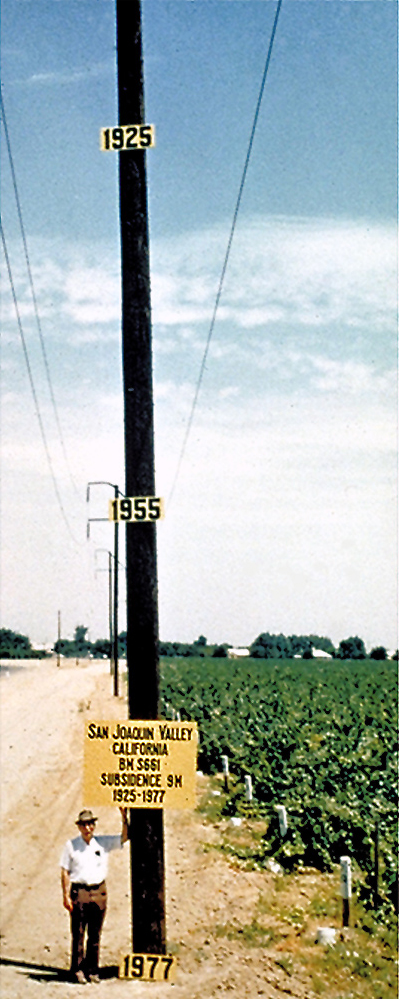Day of reckoning for the parched Southwest: technology and conservation won’t be enough
So why so much resistance to the idea of bending the growth curve?
“The entire culture of the Southwest is based on building more houses, more subdivisions, more oases in the desert,” says David Zetland, a water economist and author of the forthcoming book “Living With Water Scarcity.”
“That’s how politicians get re-elected, how cities collect tax revenue. It’s the way people in the Southwest have profited, politically and economically, for generations – by living off of water that comes from far away.”
Avoidance still rules the day, but there are some answers
From time to time, Doug Kemper, executive director of the Colorado Water Congress, a nonprofit that promotes water sustainability, hears talk of limits. As the drought has deepened, he says, “I’ve heard people raise this alarm: ‘We’ve got to do something about growth.’ And then you say: ‘Okay, what?’ And then everything just kind of gets real squishy.” Does Kemper think there’s a limit to how much the region can grow? “I think that certainly at some point there is a limit, but I don’t think we know where that limit is.”
One adaptation already underway involves dramatic changes in the built environment. What is zoned and built in Las Vegas today “looks very different,” Mulroy, southern Nevada’s water chief, says, than the Vegas of the ‘50s, even the ‘90s. Soon, “you’re going to see denser cities. You’re going to see a lot of building inside urban cores: the creation of a new urban look in the Southwest. We are going to build up, instead of out. You’re no longer going to see that southern California urban sprawl.”
Still, urban savings aren’t going to erase even the current water deficit. To do that, water managers told Remapping Debate, massive change is needed in the agricultural sector, which consumes four-fifths of the region’s water.
Sabo, the Arizona State professor who is also director of research development at the school’s Global Institute of Sustainability, says farms may have to forego raising cattle and cultivating water-intensive staples such as alfalfa, cotton, corn, rice, and “definitely lettuce.” Of the 75,000 acres of lettuce planted annually in the Southwest, 55,000 are grown in Arizona – 95 percent of them in Yuma County, in the state’s southwestern corner. Each year, Yuma receives on average 3.6 inches of rainfall.
“Why are we growing lettuce in the desert?” Sabo asks. “Because people want lettuce in their salads in the winter.” If not lettuce or alfalfa, what should farmers grow? Fruits, vegetables, and crops like soybeans, Sabo suggests, which require a lot less water than alfalfa and provide more protein.
He proposes spending on modernizing farm irrigation – money to come from tiered state taxes on drinking water, based on usage. Water surcharges could fund small, inland desalination plants, aquifer recharging and wastewater recycling projects, and funding could be given to non-governmental organizations so that they could “retire” rivers and streams by paying farmers to fallow fields on a rotating basis – compensating growers for not drawing water they are entitled to use.
“Unless we freeze population growth, which I think is unrealistic, these steps might help us increase our wiggle room for some time,” Sabo responds. “At some point technological fixes won’t be able to provide enough water for more growth. Ultimately, we’re going to be growth-limited any way you look at it.”
Sabo is not the only one to describe Czech’s vision for zero population growth in the Southwest as “unrealistic.” “Myopic” and “silly” are some similarly dismissive decriptors Remapping Debate heard when asking people about the benefits of a steady state economy.
Brian Czech responds to these sorts of criticisms by saying: “The steady state economy is not a flat-lined, static economy. It’s a dynamic economy, in which consumer preferences change, technologies change, production patterns change, sector ratios change – but the size of the whole damn thing stays the same or fluctuates mildly.”
On the other hand, no one we spoke to said that stabilizing the population or reducing it to 1990s levels would be a bad thing for the region’s water supply. Indeed, Kowalski, the Colorado water manager, told us that having the same or fewer water consumers in his state “would alleviate a lot of pressure, actually, on our existing and future water supplies. It would make things easier for us, water-wise.”
Likewise, nearly everybody acknowledged that the Southwest’s economy hummed along just fine in the ‘90s, when population levels were lower – including Nat Hodgson, the executive officer of the Southern Nevada Home Builders Association. Between 1993 and 2000 “the economy was pretty strong” in Nevada, he admits.
He insists, though, that those good times were the result of surging population. “It was good because a lot of new people came here and new businesses opened up,” he says. “Stagnant growth in southern Nevada is death for our economy.”
But would a no-growth scenario, one in which the region’s population holds or declines slightly, necessarily spell doom? Hardly, says Zetland, the water economist. Like Czech, Zetland says that a sustainable, steady state economy isn’t flat-lined or static; it can be dynamic and adapt to evolving consumer and production trends. “People would still play with their children, go to work in their cars, get their food at the market,” he says. “The sky won’t fall.”

